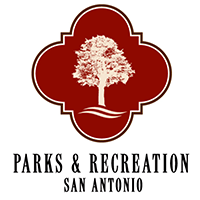Research
Evaluation of Urban Green Spaces as Habitats for Native Bees along an Urbanization Gradient in Central Texas
This study will explore various urban green spaces as habitats for native bees by comparing bee communities along a gradient of urbanization. Bee and plant communities in major urban green spaces will be sampled at sites located within the cities of San Antonio and Boerne, TX.
Two methods will be used to sample native bees: colored pan traps, or "bee bowls," and hand netting. At each site, thirty bee bowls will be set out in 150m transects for 24 hours (Figure 1). Additionally, bees will be collected using hand nets for 30 minutes at each site. Bees collected with bee bowls or by hand netting will be processed, pinned, and identified to at least the genus level. These specimens will be housed at UTSA.

Figure 1. Pictures of bee bowls in use
Vegetation will be sampled using the 25 m2 quadrat method to determine the density and basal area of woody plants. We will estimate herbaceous vegetation cover and density in 0.1 m2 transects.
We will evaluate the relationship between bee parameters (abundance and species richness) and vegetation and selected land cover categories using regression analyses. A stepwise weighted regression will be used to determine the amount of variability in bee abundance and species richness that can be described by woody plants (density and basal area), herbaceous plants (density, cover, number of nectaring blooms), and land cover metrics. Additionally, we will describe the changes in the abundance and species richness of bees and herbaceous cover as a function of time (month).










